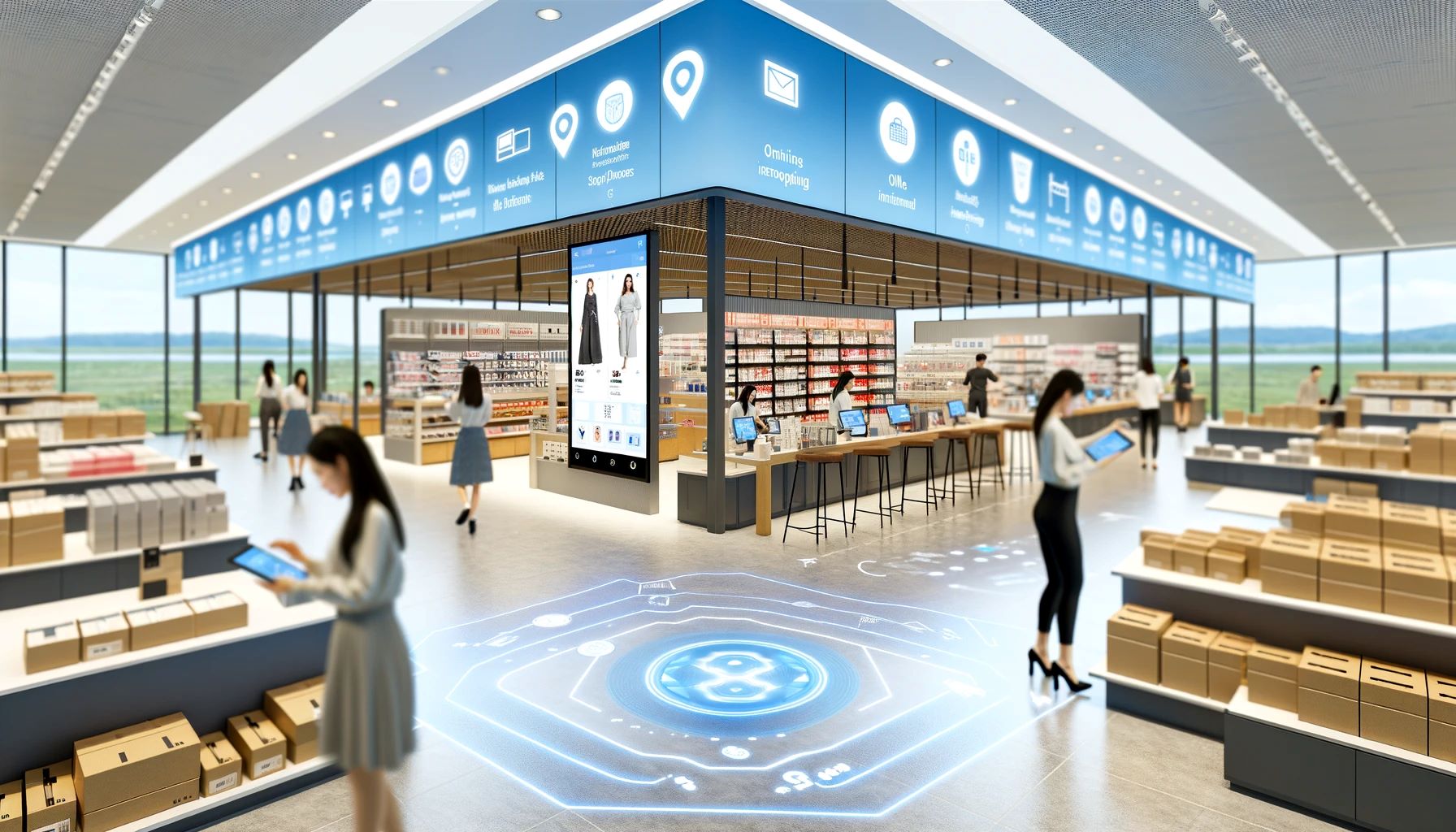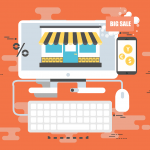
Grasping the Fundamentals of E-commerce
The digital revolution has reshaped the retail landscape, with e-commerce standing tall as a dominant force.
As consumers increasingly turn to online platforms for their shopping needs, understanding the fundamentals of e-commerce has never been more crucial.
This article breaks down the key aspects of e-commerce for both newcomers and seasoned retailers.
-
What is E-commerce?
E-commerce, or electronic commerce, refers to the buying and selling of goods or services using the internet.
It encompasses a wide range of business activities, from consumer-based retail sales to business-to-business transactions.
-
Key Components of E-commerce
- Website & Mobile Platforms: The digital storefronts where consumers browse and purchase products.
- Shopping Cart: Allows consumers to select and store products before proceeding to checkout.
- Payment Gateways: Secure systems that process payment transactions.
-
Types of E-commerce Models
- B2C (Business-to-Consumer): Businesses selling directly to end consumers.
- B2B (Business-to-Business): Transactions between businesses, often involving wholesale products or services.
- C2C (Consumer-to-Consumer): Platforms where consumers can sell to other consumers, like eBay or Etsy.
-
Advantages of E-commerce
- Global Reach: Businesses can reach a global audience without the need for physical storefronts.
- 24/7 Accessibility: Consumers can shop at any time, from anywhere.
- Personalized Shopping Experience: Using data analytics, businesses can offer tailored product recommendations.
-
Challenges in E-commerce
- Competition: The online marketplace is crowded, with many businesses vying for consumer attention.
- Security Concerns: Ensuring safe transactions and protecting customer data is paramount.
- Logistical Hurdles: Efficiently managing inventory, shipping, and returns can be complex.
-
The Importance of User Experience (UX)
- Website Design: A clean, intuitive design can enhance the shopping experience.
- Mobile Optimization: Ensuring the e-commerce platform is easily navigable on mobile devices.
- Fast Loading Times: Slow websites can deter potential customers.
-
Integrating E-commerce into Omni-channel Retailing
- Click-and-Collect: Consumers purchase online and pick up in-store.
- Unified Inventory Management: Integrating online and offline inventory systems for seamless stock management.
- Consistent Branding: Offering a uniform brand experience, whether consumers shop online or in-store.
-
Future Trends in E-commerce
- Augmented Reality (AR): Allowing consumers to virtually “try on” products.
- Artificial Intelligence (AI): Chatbots, personalized recommendations, and predictive analytics.
- Sustainable Practices: Eco-friendly packaging and ethical sourcing are becoming significant selling points.
E-commerce isn’t just an alternative to traditional retail—it’s an integral part of the modern shopping experience.
As the lines between online and offline retail continue to blur, understanding the fundamentals of e-commerce will be essential for businesses to thrive in this digital age.
Mastering Omni-channel Strategies
The rise of digital platforms has revolutionized the retail landscape.
Consumers no longer follow a linear path of buying; they jump between online and offline channels, expecting a seamless experience.
Omni-channel retailing addresses this by integrating various shopping methods.
This article explores the essence of omni-channel strategies and their importance in the modern retail environment.
-
Defining Omni-channel Retailing
Omni-channel retailing is an integrated approach that provides consumers with a unified experience across online and offline channels.
It’s not just about having a physical store and an online site; it’s about merging these worlds to offer a consistent and cohesive customer journey.
-
Why Omni-channel?
- Consumer Expectations: Modern consumers expect flexibility. They might browse online and purchase in-store, or vice versa.
- Increased Sales: A seamless shopping experience can lead to higher conversion rates and increased basket sizes.
- Loyalty and Retention: Consistent, personalized experiences foster customer loyalty.
-
Key Omni-channel Strategies
- Click-and-Collect: Customers order online and pick up their purchases in-store, combining the convenience of online shopping with the immediacy of brick-and-mortar.
- Endless Aisle: If a product is out of stock in-store, sales associates can order it online for the customer, ensuring no lost sales.
- Unified Inventory: A centralized system that tracks inventory across all channels, ensuring consistent product availability.
-
Role of Mobile in Omni-channel
- Mobile Shopping: Ensuring e-commerce platforms are optimized for mobile purchases.
- In-store Mobile Integration: Using smartphones for price checks, product reviews, or digital coupons while shopping in-store.
- Mobile Payment Solutions: Offering options like Apple Pay or Google Wallet for quicker, contactless payments.
-
Personalization Across Channels
- Data Analytics: Collecting and analyzing customer data to offer tailored shopping experiences.
- Targeted Marketing: Sending personalized offers or recommendations based on previous purchases or browsing history.
- Loyalty Programs: Rewarding customers for shopping across multiple channels.
-
Seamless Returns and Exchanges
- Hassle-free Returns: Whether purchased online or in-store, customers can return products through the channel of their choice.
- Unified Customer Service: Whether reaching out via social media, phone, or in-person, the customer service experience should be consistent.
-
Challenges in Implementing Omni-channel Strategies
- Data Silos: Fragmented data can hinder a unified view of the customer.
- Logistical Complexities: Managing inventory and fulfillment across multiple channels can be challenging.
- Change Management: Shifting from a multi-channel to an omni-channel mindset requires organizational change.
-
The Future of Omni-channel Retailing
- Virtual Reality (VR) Shopping: Offering immersive shopping experiences where customers can virtually navigate stores.
- AI-driven Personalization: Using artificial intelligence to further tailor shopping experiences based on predictive analytics.
- Integration of IoT: Devices like smart mirrors in fitting rooms or smart shelves in stores can enhance the shopping experience.
Omni-channel strategies are no longer optional; they’re imperative for modern retailers.
As the lines between digital and physical shopping continue to blur, retailers must adapt and evolve.
By implementing robust omni-channel strategies, businesses can meet consumer expectations, drive sales, and secure their place in the future of retail.
Digital Marketing in Retail
The digital age has transformed the way retailers connect with their audience.
With consumers spending more time online, digital marketing has become an essential tool for retailers to attract, engage, and retain customers.
Within the vast landscape of e-commerce and omni-channel retailing, understanding digital marketing’s nuances can be a game-changer.
This article delves into the strategies and importance of digital marketing in the retail sector.
-
Digital Marketing: An Overview
Digital marketing encompasses all online marketing activities, from social media campaigns to search engine optimization (SEO).
It allows retailers to target specific audiences, measure campaign performance, and adjust strategies in real-time.
-
Importance of Digital Marketing in Retail
- Reach: Connect with a global audience without geographical constraints.
- Precision: Target specific demographics based on preferences, behavior, and purchasing history.
- Cost-Efficiency: Often more affordable than traditional advertising with a higher return on investment (ROI).
-
Key Digital Marketing Strategies for Retailers
- SEO: Optimizing online store content to rank higher on search engines, driving organic traffic.
- Pay-Per-Click (PPC): Paid advertisements that appear on search engines or social platforms, driving targeted traffic.
- Email Marketing: Sending targeted promotions, newsletters, or updates to subscribers.
-
The Power of Social Media
- Brand Awareness: Platforms like Instagram, Facebook, and TikTok allow retailers to showcase their brand personality and products.
- Engagement: Interact with customers, gather feedback, and build a loyal community.
- Influencer Collaborations: Partner with online influencers to reach a broader or niche audience.
-
Content Marketing: Telling Your Brand’s Story
- Blogs: Share industry insights, product information, or customer stories.
- Videos: Showcase products in action, behind-the-scenes looks, or customer testimonials.
- Interactive Content: Quizzes, polls, or augmented reality experiences to engage users.
-
Personalization: The Future of Digital Marketing
- AI-driven Recommendations: Using artificial intelligence to suggest products based on user behavior.
- Retargeting Campaigns: Displaying ads to users who’ve previously visited your site or shown interest in your products.
- Chatbots: Offering real-time assistance, guiding users, or answering queries.
-
Challenges in Digital Marketing
- Data Privacy: Ensuring customer data is protected and adhering to regulations.
- Ad-Blocking: Finding ways to reach consumers who use ad-blockers.
- Saturation: Standing out in an overcrowded digital space.
-
Integrating Digital Marketing into Omni-channel Strategies
- Consistent Branding: Ensuring the brand message is consistent across all channels, from in-store to online ads.
- Unified Customer Experience: Whether a customer interacts with an email campaign, a social media post, or in-store, the experience should be seamless.
Digital marketing is not just a subset of a retailer’s marketing strategy—it’s a cornerstone.
As e-commerce and omni-channel retailing continue to evolve, so will the digital strategies that support them.
Retailers that harness the power of digital marketing, staying agile and customer-centric, will thrive in this dynamic landscape.
The Surge of Mobile Commerce and its Impact
In today’s digital age, the smartphone has become an indispensable tool for consumers worldwide.
With the rise of mobile devices, mobile commerce—or m-commerce—has emerged as a dominant force in the retail landscape.
As part of the broader e-commerce and omni-channel retailing spectrum, understanding m-commerce and its implications is paramount for modern retailers.
This article dives deep into the world of mobile commerce and its transformative impact on retail.
-
Defining Mobile Commerce
Mobile commerce refers to any transaction, whether it’s buying or selling, conducted via a mobile device.
This includes shopping through mobile-optimized websites, apps, and even through social media platforms.
-
The Ascendance of M-commerce
- Convenience on the Go: Mobile devices allow consumers to shop anytime, anywhere.
- Integrated Experiences: Features like digital wallets, one-click checkouts, and augmented reality enhance the shopping experience.
- Personalized Shopping: Mobile apps can offer tailored recommendations based on browsing history and preferences.
-
Mobile Apps vs. Mobile Web
- Mobile Apps: Offer a more personalized, streamlined shopping experience. They can utilize device features like cameras and location services.
- Mobile Web: No installation required, offering a broader reach but may lack some app-specific features.
-
The Role of Social Media in M-commerce
- Shoppable Posts: Platforms like Instagram allow direct product purchases from posts or stories.
- Influencer Collaborations: Brands partner with influencers to reach their followers directly on platforms they frequently use.
-
Augmented Reality (AR) Enhancing M-commerce
- Virtual Try-Ons: From clothes to cosmetics, AR allows users to virtually “try” products before buying.
- 3D Product Previews: Consumers can visualize products in their space before making a purchase.
-
Mobile Payments Simplifying Transactions
- Digital Wallets: Services like Apple Pay or Google Wallet enable quick, secure payments without entering card details.
- QR Code Payments: Scan and pay methods are becoming increasingly popular in physical and online stores.
-
Challenges in Mobile Commerce
- Security Concerns: Ensuring transactions are secure and protecting user data is crucial.
- Device Fragmentation: Adapting to various screen sizes, operating systems, and device capabilities can be challenging.
- Connectivity Issues: Ensuring a seamless shopping experience regardless of network strength or speed.
-
The Impact on Omni-channel Retailing
- Seamless Integration: Mobile commerce needs to integrate flawlessly with in-store, online, and other retail channels.
- Unified Customer Profiles: Tracking user behavior across devices to offer a consistent shopping experience.
- Loyalty Programs: Mobile-exclusive offers or loyalty points can encourage more mobile shopping.
Mobile commerce has undeniably reshaped the retail landscape, offering unprecedented convenience and personalized experiences.
As technology continues to evolve and consumer behaviors shift, m-commerce will play an increasingly central role in the world of e-commerce and omni-channel retailing.
Retailers that adapt and harness the potential of mobile commerce are poised to thrive in this dynamic environment.
Unlock Your Potential in Retail Management.
Enroll in our Retail Business Academy Today
Transform Your Career & Business!



















